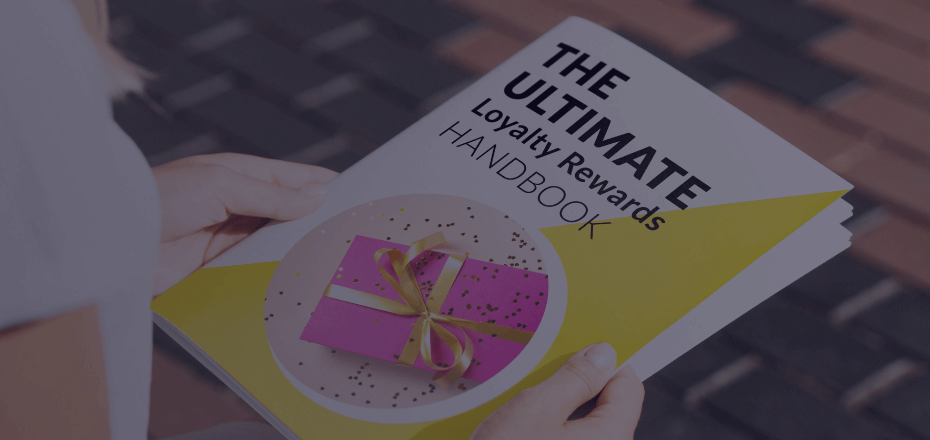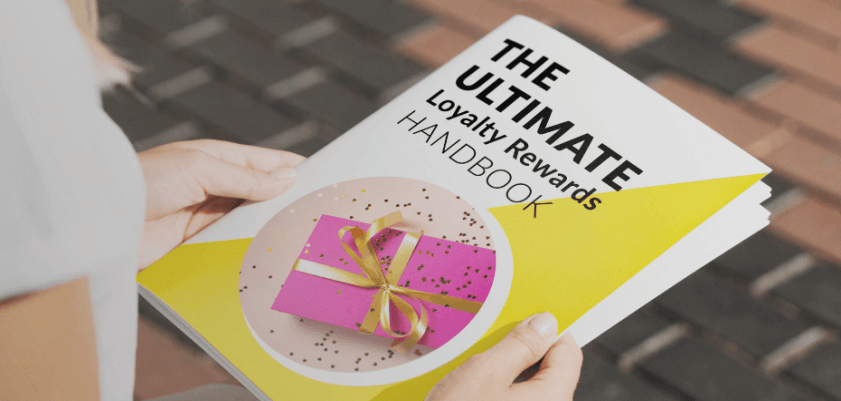Coming up with loyalty rewards for your membership program is such an exciting time for your company. All the brainstorming, all the crazy ideas! It really brings out your team’s creativity, don’t you agree? Unfortunately, reward planning meetings often end up inconclusive. In our experience, most problems stem from a lack of knowledge about reward frameworks. What types of rewards are there? What are the best practices in rewards programs? And what blunders should you avoid? Don’t worry, you’re in good hands. This guide has all the information you need.
What Are Loyalty Rewards and Why Do They Matter?
Before sinking our teeth into reward types and exploring how they are utilized, let’s look at what loyalty rewards actually are, in the context of customer retention.
Simply put, rewards are benefits or physical items that are granted, gifted, or assigned to members based on their achievements or efforts within the loyalty rewards program.
The success of a loyalty program massively depends on the rewards you offer for members. Identifying the most fitting incentives for your brand and target audience is equally as crucial as determining the goals and objectives you would like to achieve with your loyalty program.
Loyalty rewards are key motivators that:
- Keep customers invested in the long run
- Prompt actions you want customers to perform
Rewards motivate customers to change their behavior. Such behaviors might include more brand engagement or simply the use of features or services of your business that customers haven’t used before. To help you determine the best rewards for your members, we have created a Reward Planning Worksheet that will lead you through the entire process. Keep reading this guide for an in-depth explanation of each step.
In this article, we’ll show you numerous industry examples. Use our reward planning template as a benchmark for your own reward system.
9 Steps to Build a Rewards Catalog Your Customers Will Adore
Step 1: Choose the Best Types of Rewards for Your Customers
The first thing you need to understand is what types of loyalty rewards you wish to offer. There are five basic loyalty reward categories. Successful loyalty programs typically feature a mix of these, but not necessarily all of them. That’s why it makes sense to start by examining which align best with your strategy.
1. Financial Benefits
Financial benefits are either percentage-based or fixed-amount discounts, such as coupons offering either 5% or $5 off a purchase or free shipping. When customers receive financial benefits, they feel that they are getting real value after each purchase and are saving money. Financial rewards are the quickest and easiest to set up, as you don’t need to deal with physical items.
2. Service-Related Benefits
These kinds of rewards make the shopping experience more convenient from a customer’s perspective. Examples include express shipping, extended return periods, money-back guarantees, free alterations, early access, stylist recommendations, gift wrapping, priority customer support, etc. Service-related benefits are a great way to shift customers’ attention away from discounts and toward a more convenient shopping experience and generate positive word-of-mouth.
3. Gifts
When signing up for a reward program, customers often expect to receive some sort of physical product or hand-crafted item. Gifts can come from your own inventory or from a third party. You can offer gifts on special occasions, like member birthdays or their enrollment anniversary. Gifts are the perfect way to express gratitude for your customers and show you care.
4. Events & Experiences
This category consists of happenings such as parties, concerts, hotel stays, or free lunches, which can be organized by your company or a partner. Events and experiences are great opportunities to build deeper engagement, provide exclusivity, and give customers memories they’ll talk about for years. Keep in mind, however, that the more exclusive the reward, the rarer it should be to avoid damaging the feeling of exclusivity. Moreover, organizing events requires a lot of effort, especially when you’re operating in multiple countries.
5. Custom Rewards
Showcase a portfolio of unique rewards that customers can’t find anywhere else. Let your imagination run wild and come up with unique or brand-specific rewards that help your business stand out. However, realizing something truly unique will require a large amount of customer insight, creativity, and resources.
Step 2: Define the Actual Value and Cost of the Reward
One of the main things you need to think about is how much rewards will cost you. You don’t want to offer everybody a benefit that costs a fortune — you should keep the most special and costly gifts for your top customers. At the same time, try to offer quality incentives that customers want to get their hands on while also preventing going over budget.
High value: As these are the most costly rewards, only offer them for a select few. Examples include personal shopping experiences at your flagship store or a gift from your luxury collection.
Medium value: A gift package of various products. Use gamified profiling or view people’s purchase history to pick items that customers love, making the surprise even more satisfying.
Low value: Small but meaningful rewards – such as including a lipstick in the member’s order, product samples, or free toppings for visitors at a fast-food chain. These drive WOM, but only cost you a little.
Free: Virtual badges, personalized emails, or chatbot messages come at no cost to you, but they still help you to develop the relationship with customers.
Step 3: Determine Perceived Value and How Customers See Rewards
The higher the perceived value of the reward is for the customer, the stronger the emotional bond you will be able to build with them. For instance, an autographed picture of their favorite singer will be of great value but for your brand, the costs don’t necessarily have to be high.
High: A special, personal reward like a custom-designed shoe or a VIP experience carries high perceived value in the eye of the customer.
Medium: Free express shipping or early access are somewhat ordinary benefits, so, although members appreciate them, they only have a medium perceived value.
Low: If the perceived value of the reward is too low it might not be enough to keep customers buying from you and you might risk losing their interest. So try to come up with reward ideas that members will appreciate enough to come back for more — and maybe even tell their friends.
Step 4: Manage the Accessibility of Loyalty Rewards
Placing limitations on your rewards is essential to prevent accidental expenses. There are pros and cons to using both limited and unlimited rewards.
No limitation: Think of any discount or coupon with a set markdown. When there’s no time limitation, more customers will be able to redeem the reward.
Time limitation: A classical FOMO tactic in which customers need to redeem their reward within a specific period of time. Time limitations are also useful for seasonal campaigns like Black Friday or Christmas bonuses, which are only available for a given time.
Quantity limitation: When stock is limited, people automatically see the reward as valuable. Limiting quantity creates FOMO as well. Plus, customers race against each other because early birds get the worm.
Limitation by status: You can also segment your audience based on relevancy and spend value, giving special rewards to affluent buyers.
Step 5: Decide on a Spending Limit
Spending limits are usually set in loyalty programs that offer coupons or discounts. This means some coupons are only available when customers reach a minimum spending limit. For instance, when customers spend at least $50, they receive a 10% discount or get access to free shipping. Spending limits are a great way to protect your bottom line.
Step 6: Create Rewards That Resonate With Each Customer Segment
Not all customers are the same. Put an emphasis on providing loyalty rewards that customers actually want. This means you need to offer rewards that align with specific target segments in order to make your loyalty program attractive. Create rewards that are only available for a specific demographic segment or given target audience of your loyalty program, like Millenials and Gen Z sports lovers or new mothers.
Step 7: Set the Accessibility for the Rewards
Limited, one-time-only rewards create a sense of FOMO. But to avoid breaking people’s hearts, you should consider bringing back fan favorites now and again. Or you can add always-available rewards to your loyalty program, such as service-related benefits like free express shipping or extended return periods. Members will count on these rewards when shopping and can help set your loyalty program apart from your competitors.
Step 8: Decide Where Your Rewards Will Be Available
Decide whether you wish to make each reward accessible only online, only offline, or to make it omnichannel.
Online: Downloadable benefits or rewards sent via email, for instance, a brand ambassador badge or free express shipping, are a convenient and cost-effective way to reward members.
Offline: Reward your in-store customers and engage them at every step of their local store experience. If you offer their gift with their next purchase, they might even do an unboxing video for social media, generating word-of-mouth.
Mobile app: Having a dedicated mobile app empowers users to claim and redeem rewards on-the-go, pull up the membership card, and even access exclusive member content.
Lifestyle: Your customer’s everyday life is the unofficial fourth channel in your omnichannel marketing strategy. Companies can forge a strong emotional bond with customers by rewarding them for engaging with their hobbies and interests.
Step 9: Arrange Reward Logistics
How will customers receive their rewards? You shouldn’t forget about logistics, because they affect the core of your marketing budget.
Direct download: If it’s a leaflet or an event ticket, the customer can access it through a download link.
Digital rewards, sent via email: These are the most cost-effective as you don’t have to pay any shipping costs. But don’t forget that digital rewards have less of an emotional impact.
Delivered by your service center: The reward will be sent to the customer at the cost of the company.
Delivered with the next purchase: The customer will get their reward automatically with their next purchase. This keeps money in your pocket, but the wait can be a bit disappointing for customers.
Code redemption: The reward is a coupon code, which the customer can use during the checkout process.
Get Ready To Be Creative
Hopefully, all your questions have been answered. From now on, nothing is holding you back from unleashing your full creative potential. So schedule a brainstorming session with your team and start planning your loyalty rewards.
Of course, rewards are just a stepping stone in your customer retention strategy. For more info about loyalty programs, or to learn how to make your design idea come to life, book a demo or include us in your RFP.
Barbara is a Loyalty Program Specialist at Antavo and a Certified Loyalty Marketing Professional - CLMP. She is also a writing expert with several years of experience in marketing and also in the information technology industry. In her free time she likes traveling the world, reading crime stories, and doing crossword puzzles.

